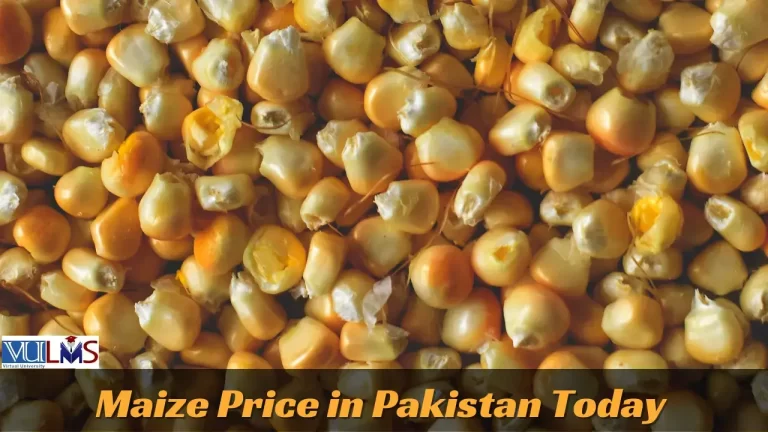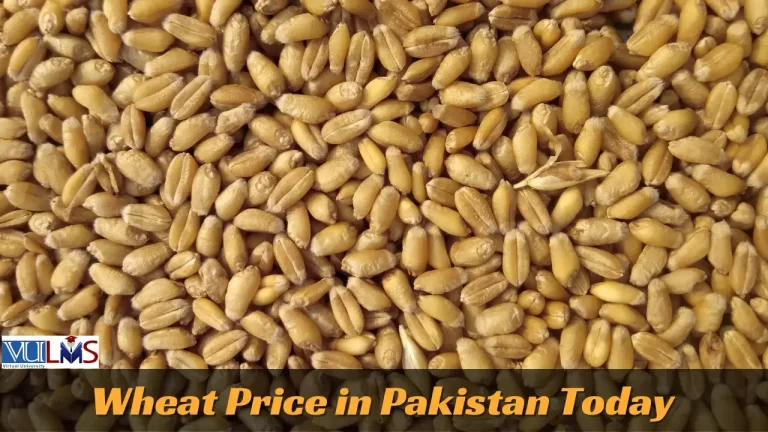Rice Price List in Pakistan Today 2024| Chawal Rate in Market
Are you wondering about the Rice Price in Pakistan today for 2024? In a world where economic stability teeters on the precipice, a humble grain holds the power to sway markets and affect millions of lives. That grain is rice. With its strategic importance, rice has become a key player in the global food market. In Pakistan, a nation where rice is a dietary staple, keeping a keen eye on the rice rate in Pakistan today is more than just a matter of curiosity; it’s a necessity.
Let’s delve into the world of rice prices, exploring the factors influencing them and their impact on consumers and trade.

Rice Price in Pakistan Today 2024
The price of rice in Pakistan in 2024 is a matter of great significance, not just for consumers but also for the overall economy. It is essential to know the Rice Price because rice is a staple food in the country, and any fluctuations in its price can have a cascading effect on the cost of living. As of 2024, the price of rice typically ranges from Rs. 350 to Rs. 450 per kilogram, with variations depending on the rice variety, quality, and market conditions.
To get a detailed breakdown of rice prices in Pakistan for 2024, please refer to the table at the end of this section. It provides a comprehensive overview of the prices of different rice varieties and their respective ranges, giving you an in-depth understanding of the current market rates.
1 KG Rice Price in Pakistan 2024 Today
For those looking to purchase rice in smaller quantities, the price of 1 kilogram plays a crucial role. The cost of a 1 kg bag of rice in Pakistan today ranges from Rs. 350 to Rs. 450, giving consumers options to match their preferences and budgets.
| Rice Quantity | Minimum Price | Maximum Price |
|---|---|---|
| 1 KG Rice | Rs. 350 | Rs. 450 |
25 KG Rice Price in Pakistan
Many households prefer to buy rice in bulk to cater to their long-term culinary requirements. The price of a 25 kg bag of rice in Pakistan varies, with rates ranging from Rs. 5000 to Rs. 7800. Staying informed about these rates helps in budget planning and ensuring a steady rice supply.
| Rice Quantity | Minimum Price | Maximum Price |
|---|---|---|
| 25 KG Rice | Rs. 5,000 | Rs. 7,800 |
40 KG Rice Price in Pakistan Latest Rates
For larger families or businesses, the 40 kg bag of rice is a common choice. The latest rates for a 40 kg bag of rice in Pakistan fall within the range of Rs. 2700 to Rs. 6400. Understanding these prices is essential for bulk buyers to make informed purchasing decisions and manage their expenses efficiently.
| Rice Brand Names | Type of White | Type of Sella | Type of Steam |
|---|---|---|---|
| C 9 40 KG Bag Price | Rs. 2,600 | Rs. 2,800 | Rs. 3,300 |
| Kainat 1121 40 KG Bag Price | Rs. 5,200 | Rs. 6,000 | Rs. 6,400 |
| Kainat 1121 B2 Broken 40 KG Bag Price | Rs. 2,200 | Rs. 2,400 | Rs. 2,800 |
| Kainat 1121 B1 Broken 40 KG Bag Price | Rs. 2,600 | Rs. 2,800 | Rs. 3,200 |
| Super B2 Broken 40 KG Bag Price | Rs. 2,350 | Rs. 2,450 | Rs. 2,800 |
| Super Basmati Old 40 KG Bag Price | Rs. 4,900 | Rs. 5,300 | Rs. 6,000 |
| Super Fine 40 KG Bag Price | Rs. 3,000 | Rs. 3,580 | Rs. 4,000 |
| 1509 40 KG Bag Price | Rs. 4,300 | Rs. 4,900 | Rs. 5,100 |
| Super B1 Broken 40 KG Bag Price | Rs. 2,600 | Rs. 2,750 | Rs. 3,150 |
| Kainat 1121 Short Grain 40 KG Bag Price | Rs. 3,200 | Rs. 3,400 | Rs. 3,600 |
| Supri 40 KG Bag Price | Rs. 2,700 | Rs. 2,900 | Rs. 3,000 |
| 386 Basmati 40 KG Bag Price | Rs. 2,850 | Rs. 3,300 | Rs. 3,600 |
| Super Kainat Rice Rate 25 KG Bag | Rs. 4,200 | Rs. 4,300 | Rs. 4,600 |
| Irri 6 40 KG Bag Price | Rs. 2,350 | Rs. 2,600 | Rs. 2,800 |
| New Super Basmati 40 KG Bag Price | Rs. 4,700 | Rs. 5,000 | Rs. 5,400 |
| Super Short Grain 40 KG Bag Price | Rs. 3,200 | Rs. 3,400 | Rs. 3,600 |
Also Read:
Cotton Price in Pakistan Today
50 Kg Rice Price in Pakistan
The 50 kg bag of rice is a standard unit for commercial buyers, restaurants, and caterers. Monitoring the price for a 50 kg bag in Pakistan is crucial, as it falls between Rs. 14999 to Rs. 16800. These rates directly impact the operational costs and pricing strategies of those in the food industry.
| Rice Quantity | Minimum Price | Maximum Price |
|---|---|---|
| 50 KG Rice | Rs. 14,999 | Rs. 16,800 |
Rice Varieties in Pakistan
Pakistan boasts a rich diversity of rice varieties, each with its unique characteristics and rate points. These rice varieties cater to various culinary preferences and are essential components of Pakistani cuisine. Let’s explore some of the prominent rice varieties in Pakistan:
1- Basmati Rice
Basmati rice is the pride of Pakistan, renowned for its exceptional aroma, long, slender grains, and exquisite taste. It’s often considered the best rice variety globally and holds a special place in the hearts of Pakistani households. Due to its premium quality and fragrance, Basmati rice typically commands a higher price in both local and international markets.
2- Long-Grain Rice
Long-grain rice, often found on Pakistani dinner tables, is known for its versatility. This variety is appreciated for its medium grain length and adaptability to a wide range of culinary styles. Its pricing usually falls in the mid-range, making it an affordable option for the average consumer.
3- Short-Grain Rice
Short-grain rice, with its stickier texture, is favored for dishes like biryani, sushi, and various desserts. It typically falls in the mid-range price category, making it accessible for various culinary uses. The unique texture of short-grain rice adds a distinct character to dishes, making it a popular choice in Pakistani cuisine.
Factors Influencing Rice Prices
The price of rice, like in any other part of the world, is subject to various influences that can cause fluctuations in the market. Understanding these factors is essential for both consumers and those involved in the rice trade. Here are five key factors that influence rice prices:
- Weather Conditions: Weather plays a pivotal role in rice production. Natural disasters such as droughts, floods, or unseasonal rains can disrupt the rice cultivation process, leading to reduced supply and subsequently higher prices.
- Government Policies: Government policies and interventions significantly impact rice prices. Subsidies, price controls, and regulations can either stabilize or cause fluctuations in the rice market. Export bans or restrictions can also affect the availability of rice in the domestic market.
- International Trade: Pakistan is a significant player in the global rice market, both as an exporter and an importer. International demand, export regulations, and import tariffs can influence local rice prices. Fluctuations in the global market can have a direct impact on the cost of rice in Pakistan.
- Crop Yields: The quantity and quality of rice harvested each year play a crucial role in determining prices. High yields can lead to lower prices, while poor yields result in higher prices due to supply constraints.
- Market Dynamics: Local market dynamics, including demand and supply, also influence rice prices. Factors such as the buying behavior of consumers, the role of intermediaries, and the availability of rice storage facilities can affect the pricing structure.
By considering these factors, consumers and traders can make informed decisions, helping to manage the impact of price fluctuations in the rice market.
Historical Price Trends
To understand the current rice prices in Pakistan, historical trends provide valuable insights into rate list patterns. These trends reveal that rice prices have experienced fluctuations, influenced by factors such as weather conditions, government policies, and international trade. Favorable weather and high crop yields tend to stabilize prices, while adverse conditions can lead to price spikes.
Government policies, including subsidies and price controls, aim to maintain stability but may result in unintended consequences. Historical data also underscores how global events, like the COVID-19 pandemic, and shifts in consumer preferences impact rice prices. Analyzing these trends helps anticipate and respond to future developments in the rice market.
Rice Price Comparison
Comparing rice prices between different regions and markets is essential for making informed choices. Local and international price comparisons can help consumers and businesses plan their rice-related activities. A thorough price comparison can reveal disparities and trends that may influence purchasing decisions and trading strategies.
Local Price Comparisons
Local price comparisons assess rice prices in different regions within Pakistan, influenced by factors like transportation costs and demand. This understanding empowers cost-effective choices for consumers and distribution optimization for businesses. It facilitates informed decisions in the local market.
International Price Comparisons
International price comparisons are crucial for rice exporters and importers, offering insights into competitive pricing and market demand. Traders leverage this data to make favorable decisions for both local and global trade. Understanding how Pakistan’s rice prices stack up against other nations is vital for consumers and exporters, guiding economic and strategic choices.
Impact on Consumers
The price of rice in Pakistan directly affects the lives of its citizens. As a staple food, even slight price fluctuations can strain household budgets, reducing purchasing power and potentially leading to financial hardship. Stable or lower rice prices provide relief to households, allowing resources to be allocated to other essential needs. Managing these fluctuations is crucial for the welfare and economic stability of the population.
Export and Import Trends
Pakistan plays a significant role in the global rice trade, both as an exporter and an importer. Understanding the dynamics of rice exports and imports is vital for policymakers and traders alike. It helps balance domestic supply and demand and fosters international trade relationships.
Export Trends: Pakistan’s rice exports have been on an upward trajectory in recent years. The country exports rice to various regions, including the Middle East, Africa, and Europe. These exports not only contribute to the country’s economy but also help meet the rice demands of nations worldwide. Tracking export trends is essential for gauging global demand and ensuring that Pakistan remains a reliable source of quality rice.
Import Trends: While Pakistan is a significant rice exporter, it also engages in rice imports to meet domestic demand for specific varieties. Understanding import trends is crucial to balancing the domestic market and addressing consumer preferences. Additionally, it’s essential to monitor international trade dynamics, including tariff changes and trade agreements that may affect the flow of rice into and out of Pakistan.
By keeping a close eye on export and import trends, Pakistan can maintain a robust position in the global rice trade, balancing its own supply and demand while continuing to be a key player in the global rice market.
Also Read:
Onion Price in Pakistan Today | Pyaz Latest Rate
Conclusion of Rice Price in Pakistan
In conclusion, the Rice Price in Pakistan Today is not merely a number on a chart; it’s a vital economic indicator that affects the daily lives of millions. It’s essential to keep a close watch on rice prices, the factors influencing them, and the historical trends. By doing so, we can ensure the stability of this dietary staple and the economic well-being of our nation.
Rice is more than just a commodity; it’s a cultural and economic cornerstone in Pakistan. Its price influences everything from household budgets to international trade. Understanding the intricate world of rice pricing allows us to make informed choices as consumers and to shape policies that benefit the entire nation. As we move forward, let’s continue to monitor and manage rice prices to ensure that this essential grain remains accessible to all, sustaining both our tables and our economy.
Frequently Asked Questions (FAQs)
The price of Basmati rice in Pakistan varies, but on average, it falls within the range of Rs. 400 to Rs. 450 per kilogram.
Government policies, such as subsidies and price controls, can influence rice prices. These policies aim to either stabilize or regulate prices.
Pakistan primarily exports rice to countries in the Middle East, Africa, and Europe, making these regions crucial markets for Pakistani rice.
Consumers can consider buying rice in bulk during periods of lower prices and storing it for future use to mitigate the effects of price fluctuations.
Daily rice prices in Pakistan can be monitored through various sources, including government websites, market reports, and mobile apps that provide real-time price updates.






